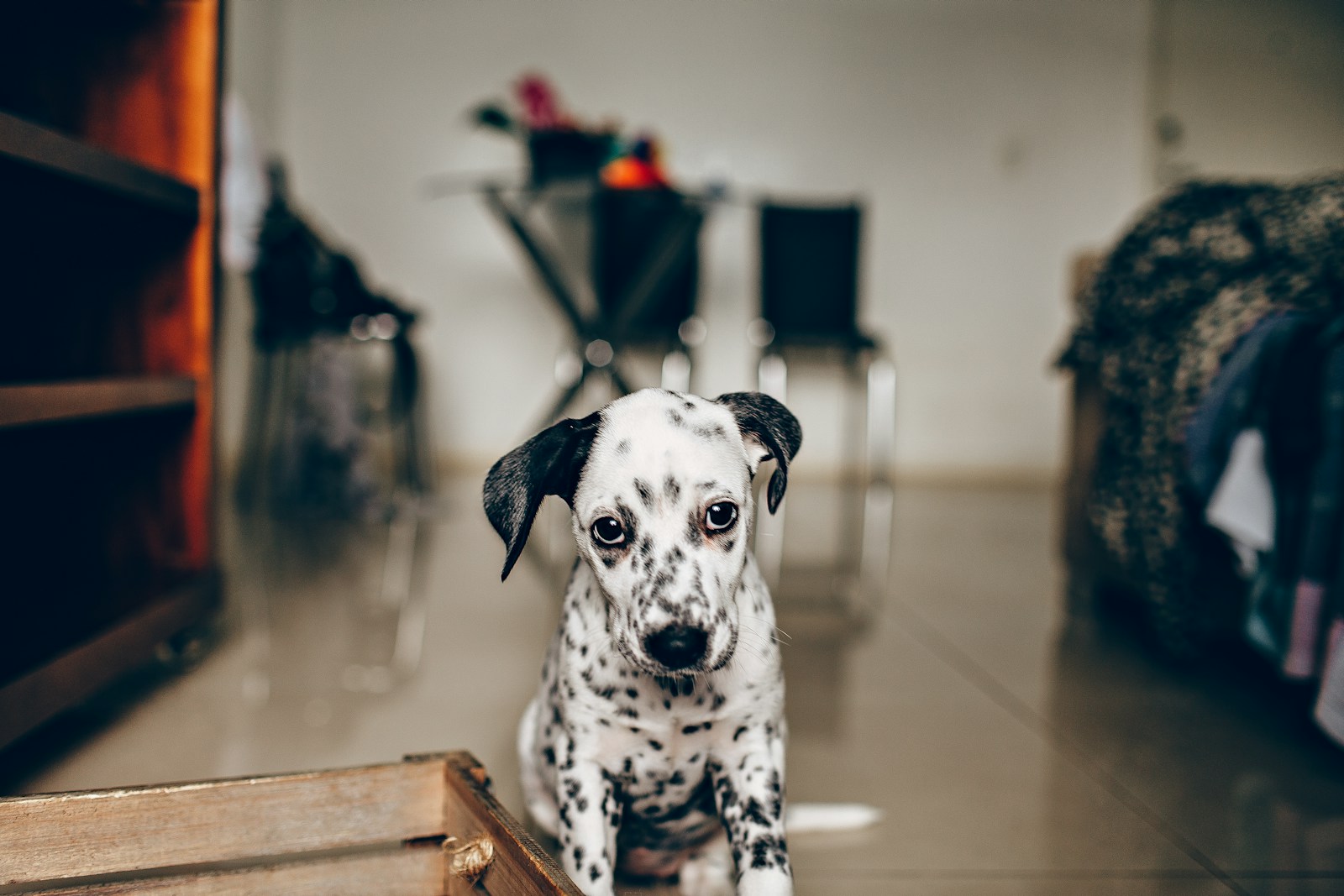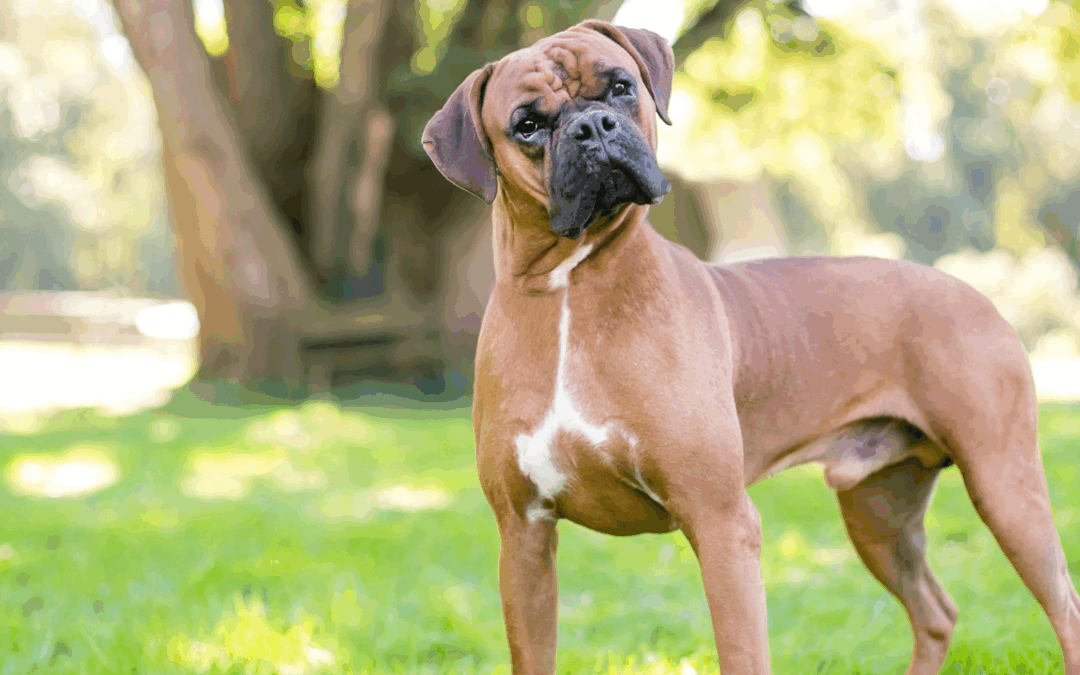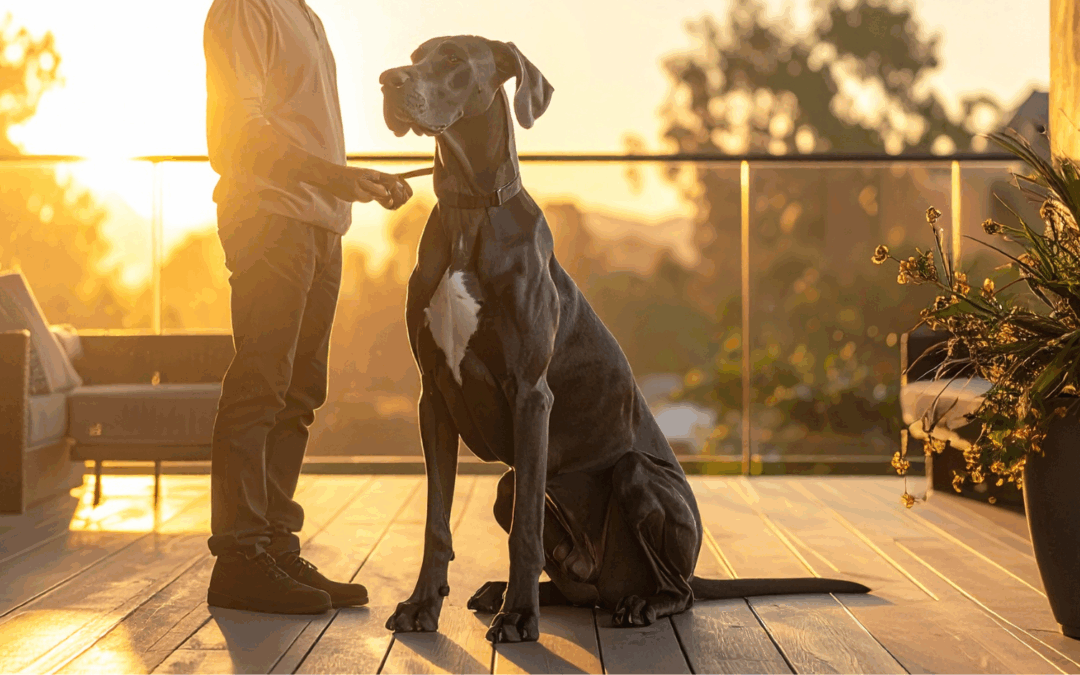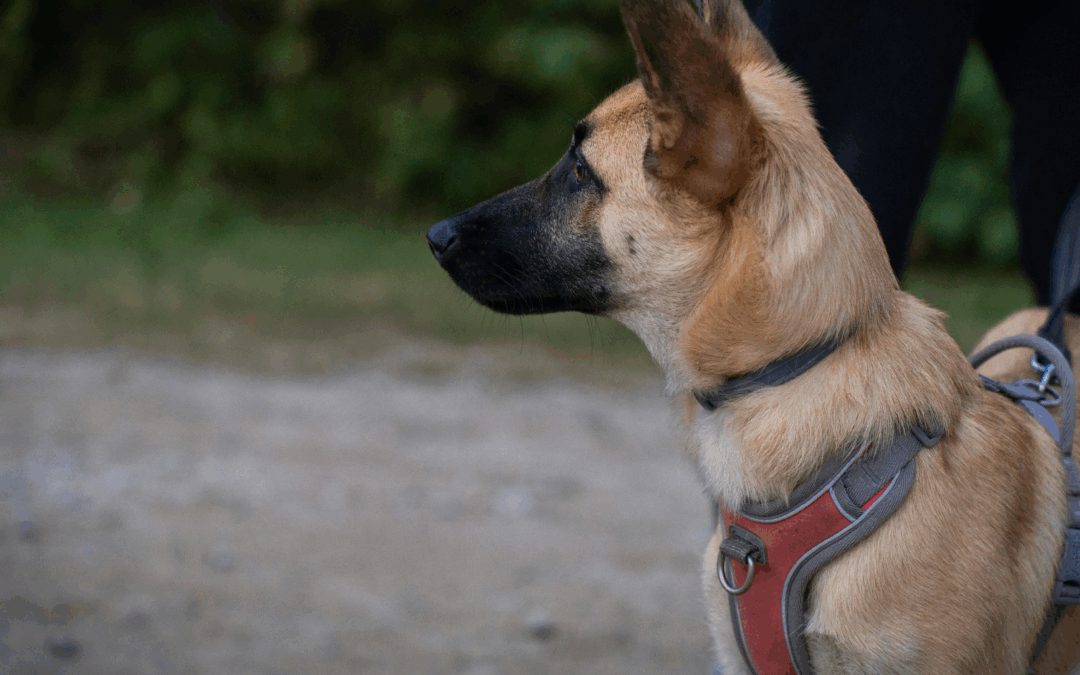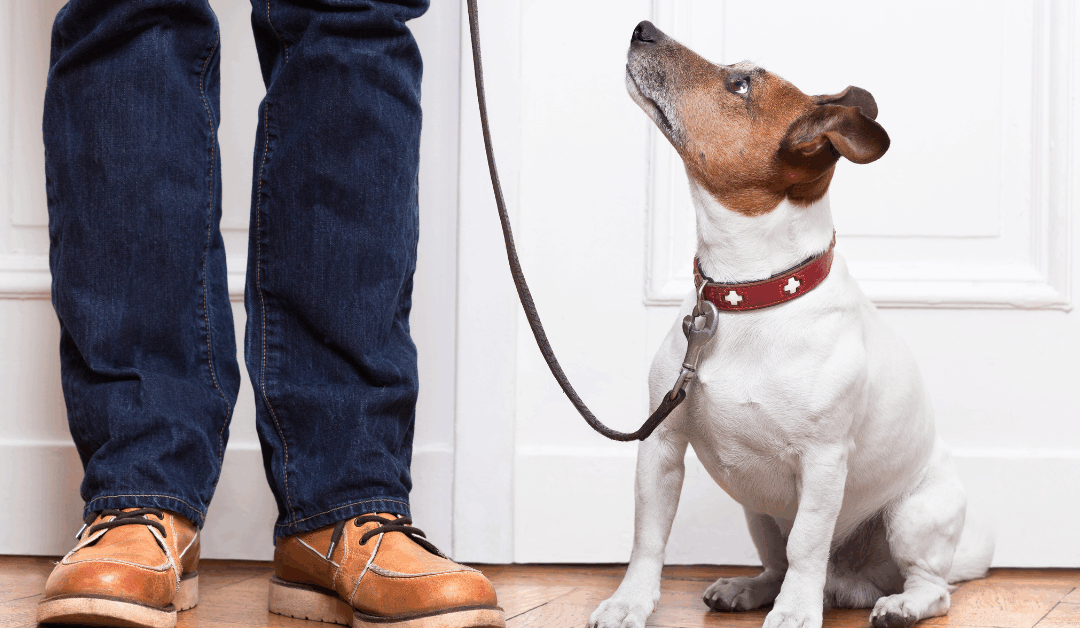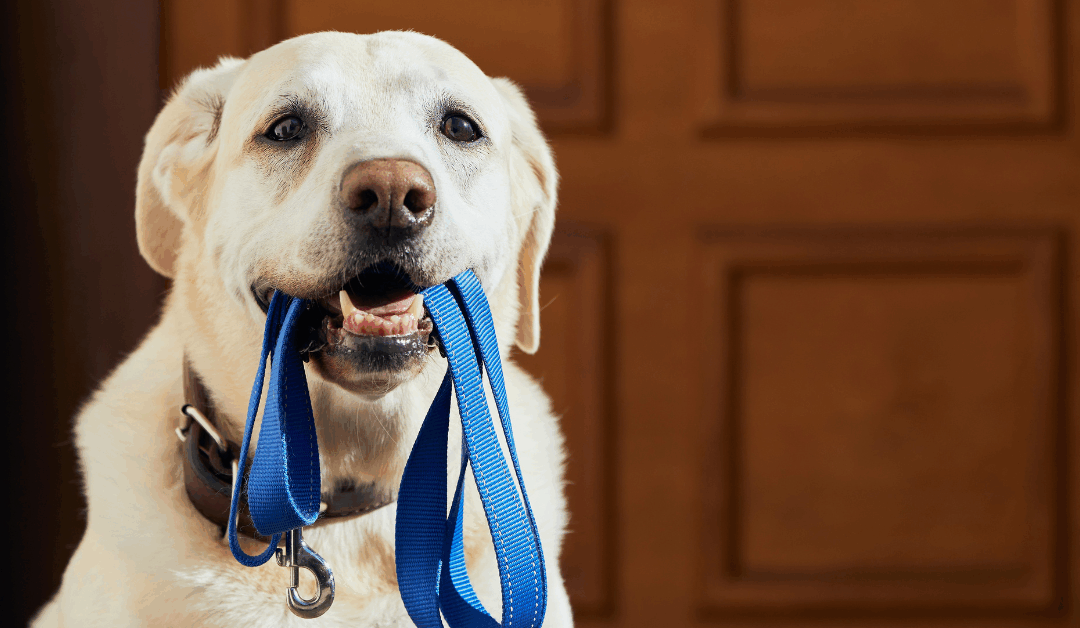Bringing home a new puppy fills your heart with joy—until you discover that adorable fluffball has turned your living room into their personal bathroom. If you’re feeling overwhelmed by accidents, chewed-up shoes, and the lingering smell of pet messes, you’re not alone. Every dog owner has been there.
The good news? With the right approach, patience, and consistency, you can transform your accident-prone pup into a well-trained companion who knows exactly where and when to go potty. This comprehensive guide will walk you through proven dog potty training methods, common challenges, and expert tips to help you and your new friend succeed.
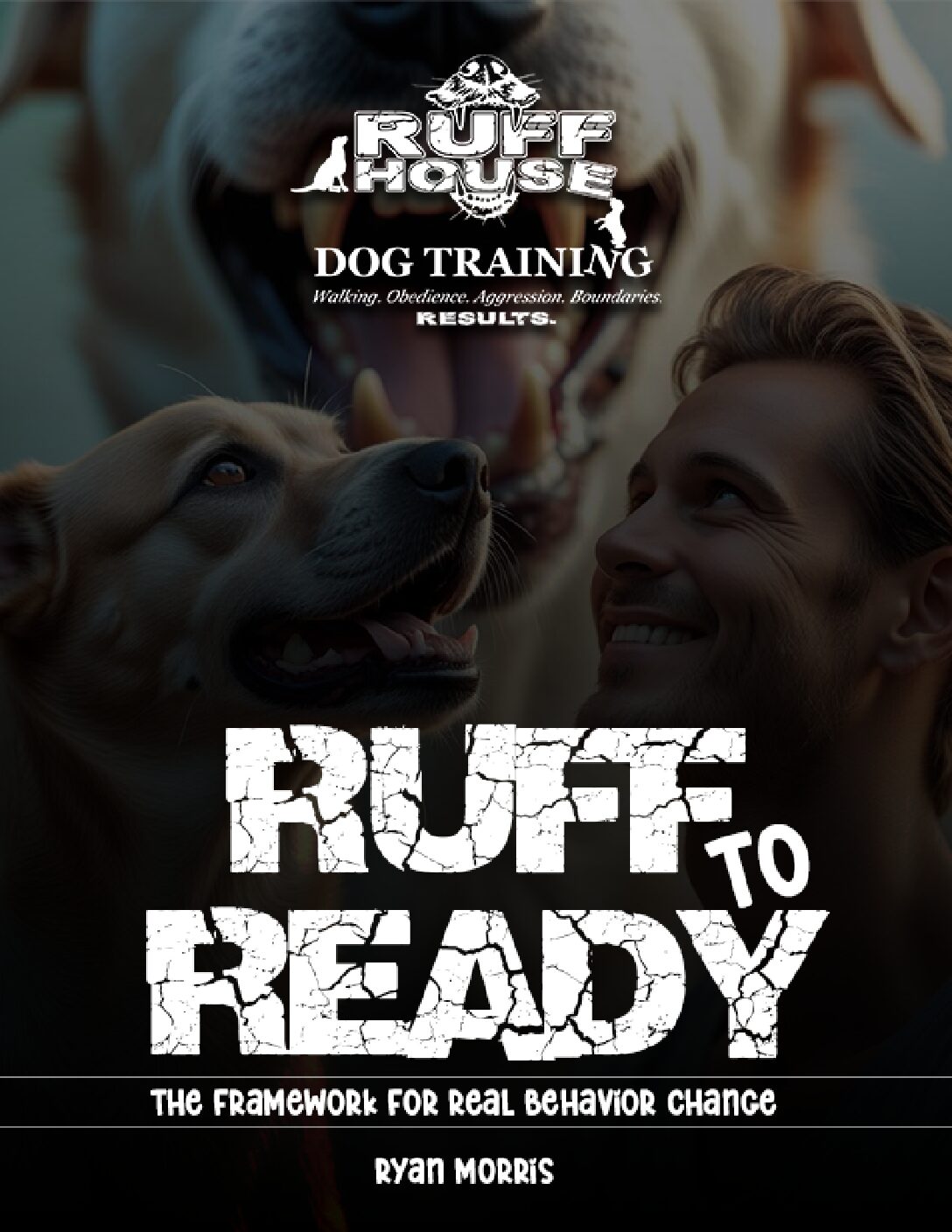
Unlock Real Behavior Change – Download Your Free Guide Now
"*" indicates required fields
Whether you’re dealing with a young puppy who’s still learning the ropes or an adult dog adjusting to a new home, this guide covers everything you need to know about house training your four-legged family member.

How Ruff House Dog Training Can Help with Potty Training
Ruff House Dog Training offers a comprehensive 6-week dog obedience program designed to provide the essential skills and guidance you need for successful potty training. Their experienced trainers focus on creating a structured routine and teaching fundamental commands that help your dog understand what is expected.
During the program, your pet will be introduced to techniques that promote consistency and balanced reinforcement, ensuring they develop good habits effectively. Additionally, the trainers at Ruff House specialize in addressing common potty training challenges, making it easier for both puppies and adult dogs to adapt to house training. With personalized attention and professional expertise, Ruff House Dog Training can be the support system you need to achieve potty training success.
In head trainer Ryan’s new E-Book ‘Ruff To Ready’, he talks about how with consistent potty training, you’re creating predictability for your dog. He states that feeding structure, crate use, timing, and positive reinforcement can create a consistent schedule. These resources can ensure that your dog understands what is expected at home.
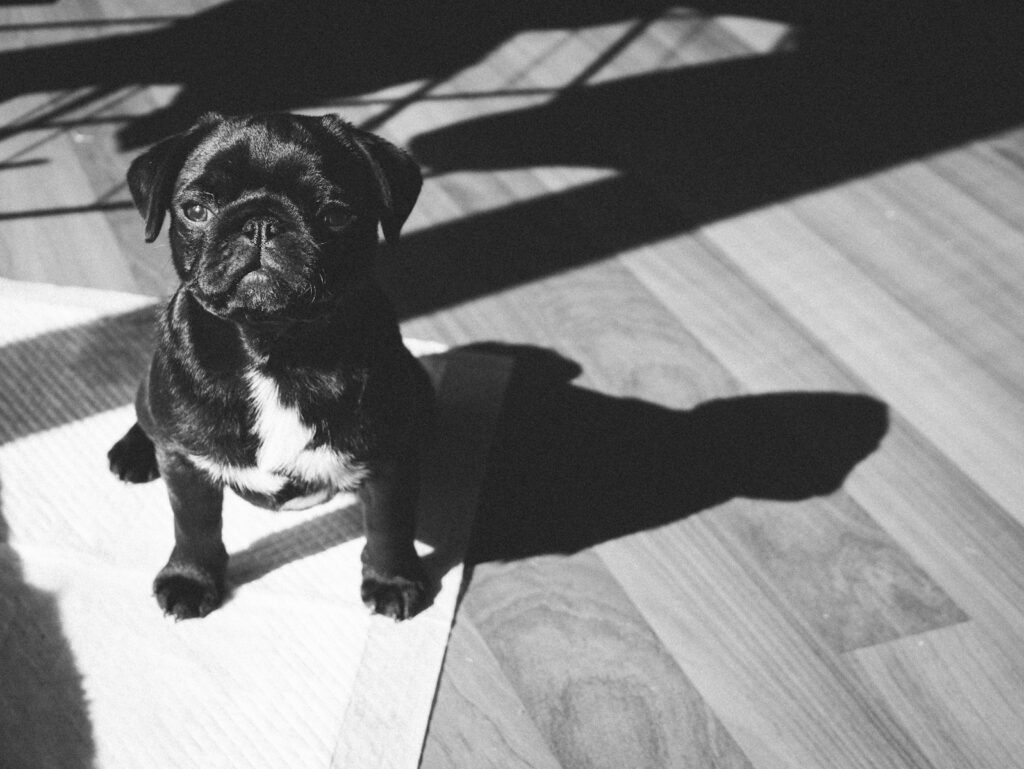
Photo by Michelle Middleton on Unsplash
Understanding Your Dog’s Potty Habits
Before diving into training techniques, it’s essential to understand how dogs naturally approach bathroom habits. Most dogs prefer to eliminate in the same spot once they’ve established a routine. This instinct works in your favor during training, as dogs learn to associate specific areas with bathroom time.
Young puppies have smaller bladders and less control than adult dogs. While a mature dog can hold their bladder for several hours, puppies typically need a potty break every 1-2 hours during the day. The general rule is that a puppy can hold their bladder for about one hour per month of age, plus one additional hour.
Many factors influence your dog’s potty schedule, including their age, size, diet, and activity level. Small dogs often need more frequent bathroom breaks than larger breeds due to their faster metabolisms and smaller bladders. Understanding these natural patterns helps you anticipate when your pup needs to go outside.
The truth is, puppies are usually on a free-feed system, which makes it unpredictable for potty breaks. It’s important to start to establish routine early to include feeding. Intake dictates outgoing. The more the puppy drinks, the more they’ll have to go potty. The less you know about when they drink, the less you’ll know about when they need to go, which will consume your life, taking the dog out hourly. Restrict access to food and water. Get them on a schedule. Whether you feed twice or three times a day, have it be structured and don’t go based on how you feel or what you think they need. Dogs are opportunists and take advantage of every situation they can. They’ll stuff their faces with food and water until it’s pouring from their eyeballs. Don’t allow that to happen. Give a time limit to food and water and then remove it, whether the dog has eaten and drank or not. You’ll quickly be able to have a more manageable potty schedule by doing this.
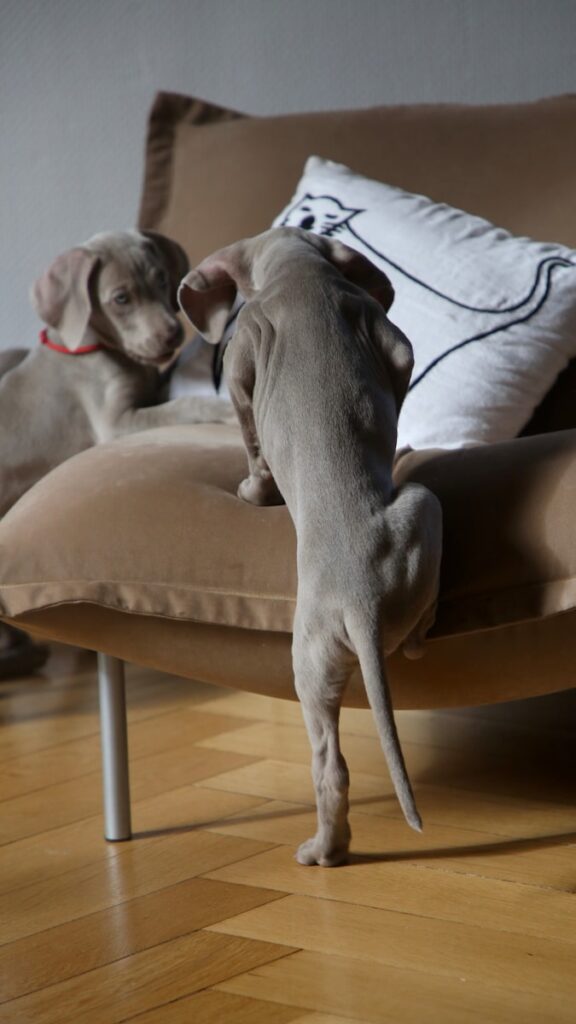
Photo by Nathalie SPEHNER on Unsplash
Essential Supplies for Successful House Training
Setting yourself up for success starts with having the right tools. Here’s what every dog owner needs for effective potty training:
Enzymatic Cleaner: Accidents will happen, and regular household cleaners won’t eliminate the odor completely. An enzymatic cleaner like Nature’s Miracle breaks down the proteins in urine and feces, preventing your dog from returning to the same spot.
Crate: A properly-sized crate supports the training process. Dogs naturally avoid soiling their sleeping area, making crate training an effective method for teaching bladder control.
Leash: Keep the leash on the dog and have the dog attached to you so you can see when they’re about to go and take them out immediately.
High-Value Treats: Reward your dog immediately when they go to the bathroom in the right place. Keep treats handy so you can praise the right behavior the moment it happens.
Cleaning Supplies: Stock up on paper towels, rubber gloves, and odor-neutralizing products to handle accidents quickly and thoroughly.
The Foundation: Establishing a Routine
Consistency is the key to successful potty training. Dogs learn through repetition and reinforcement, so establishing a predictable schedule helps them understand when and where they should eliminate.
Creating a Potty Schedule
Take your dog outside at the same times every day. Most dogs need bathroom breaks:
- First thing in the morning
- After meals (15-30 minutes)
- After naps
- After play sessions
- Before bedtime
Young puppies may need additional breaks between these scheduled times. Watch for signs that your pup needs to go, such as sniffing around, circling, whining, or heading toward the door.
Choosing the Right Potty Spot
Select a specific area in your yard where you want your dog to go to the bathroom. Take them to the same spot each time and use a command like “go potty” to help them associate the location with the action. Stay in this area until your dog does their business, then reward them immediately.
If you don’t have a yard, choose a nearby outdoor location that’s easily accessible. Many apartment dwellers find success with a designated area just outside their building or a nearby patch of grass.
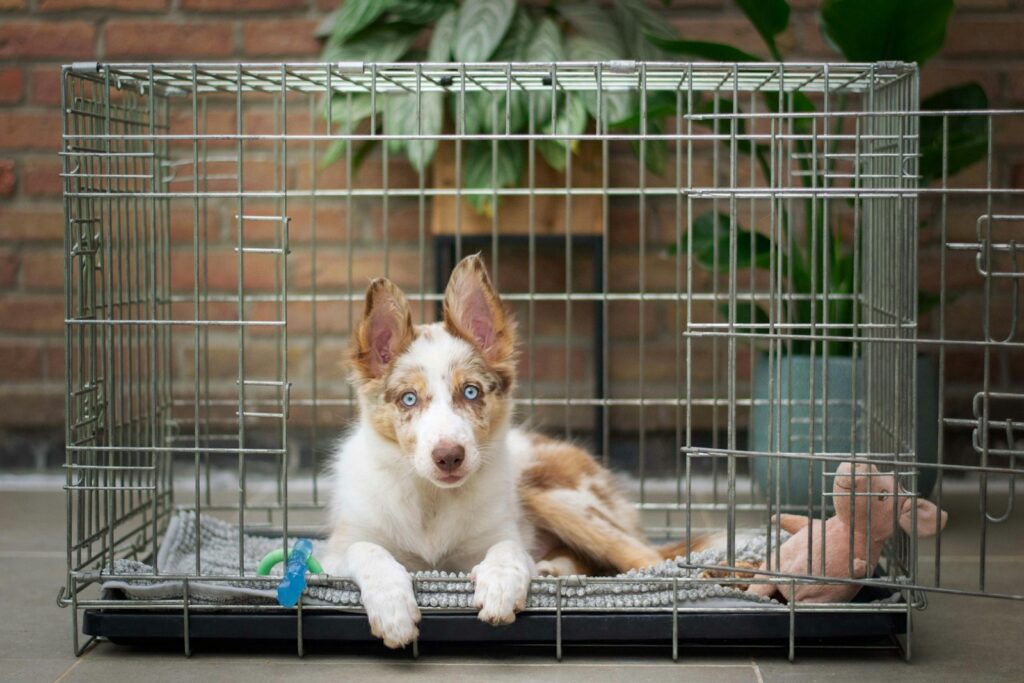
Photo by Ayla Verschueren on Unsplash
Crate Training: Your Secret Weapon
Crate training works because dogs instinctively avoid soiling their sleeping area. When used correctly, a crate becomes a safe space that helps your dog develop better bladder control and gives you peace of mind when you can’t supervise them directly.
Choose a crate that’s large enough for your dog to stand up, turn around, and lie down comfortably, but not so large that they can eliminate in one corner and sleep in another. If you have a growing puppy, consider a crate with a divider that you can adjust as they mature.
Never use the crate as punishment. Your dog should view their crate as a comfortable den, not a jail cell. Gradually increase the time your dog spends in the crate, starting with short periods and building up to longer durations as they become more comfortable.
Remember that puppies and young dogs shouldn’t be crated for long periods. The general rule is that puppies can stay crated for about one hour per month of age during the day, with a maximum of 6-8 hours for adult dogs.
Managing and Minimizing Accidents
Even the most dedicated dog owner will face accidents during the training process. How you handle these situations can significantly impact your dog’s progress.
Immediate Cleanup
When you catch your dog having an accident in the wrong place, interrupt them with a firm “no” and immediately take them outside to their designated potty spot. If they finish going to the bathroom outside, praise and reward them.
Clean accidents thoroughly with an enzymatic cleaner to eliminate odors that might attract your dog back to the same spot. Many dogs will repeatedly use areas that smell like previous accidents, creating a cycle that’s hard to break without proper cleaning.
Supervision and Management
The most effective way to minimize accidents is to prevent them in the first place. Watch your dog closely for signs that they need to go outside. Common signals include:
- Sniffing the ground intensively
- Walking in circles
- Whining or barking
- Scratching at the door
- Suddenly becoming restless
If you can’t supervise your dog directly, confine them to a small, easily cleaned area or use their crate. Never give an untrained dog free run of the house when you’re not watching.
Special Considerations for Adult Dogs
While this guide focuses heavily on puppies, adult dogs may also need house training. Rescue dogs, dogs from shelters, or pets adjusting to a new home might not have established good potty habits.
Adult dogs typically learn faster than puppies because they have better bladder control and can understand routine more quickly. However, they may also have established bad habits that take time to break. Be patient and consistent with the same training methods you’d use for a puppy.
Some adult dogs may have medical issues that affect their bathroom habits. If your adult dog suddenly starts having accidents after being well-trained, consult your veterinarian to rule out health problems.
Troubleshooting Common Challenges
Frequent Accidents
If your dog continues having frequent accidents despite consistent training, consider whether you’re giving them enough opportunities to succeed. Young puppies may need bathroom breaks more often than you’re providing. Try increasing the frequency of potty breaks and see if this reduces accidents.
Regression in Training
Sometimes, dogs who seem to understand potty training suddenly start having accidents again. This regression can result from changes in routine, stress, medical issues, or simply testing boundaries as they mature. Return to the basics of supervision, frequent potty breaks, and immediate rewards for success.
Weather Challenges
Many dogs resist going outside in bad weather, leading to indoor accidents. Gradually acclimate your dog to different weather conditions by taking short trips outside during light rain or snow. Consider providing a covered area or using booties and rain gear to help your dog stay comfortable.
Apartment Living
Dog owners in apartments face unique challenges but can still achieve success with consistent training. Establish a routine for elevator rides and hallway walks to reach the outdoor potty area. Consider using pee pads as a backup option, but remember that this may prolong the overall training process.
Pee Pads – Note from Trainer
I personally hate pee pads. I don’t want to teach the dog to pee in the house, nor do I want the extra clean-up when they inevitably destroy the pee pad. Create structure in your dogs feedings so the bathroom schedule is known, reducing the need for pee pads.
Making Long-Term Success Sustainable
As your dog matures and becomes more reliable, you can gradually increase their freedom in the house. Start by allowing access to one additional room, then slowly expand their territory as they prove they can handle the responsibility.
Maintain consistent routines even after your dog seems fully trained. Most dogs thrive on predictable schedules, and maintaining regular potty breaks helps prevent regression.
Consider hiring a dog walker if your work schedule requires your pet to hold their bladder for extended periods. Even well-trained adult dogs shouldn’t be expected to go more than 8 hours without a bathroom break.
Your Next Steps to Dog Potty Training Success
Successful dog potty training requires patience, consistency, and understanding of your pet’s natural instincts. Remember that every dog learns at their own pace, and setbacks are a normal part of the process.
Start implementing these strategies today by establishing a consistent potty schedule and gathering the necessary supplies. Focus on preventing accidents through supervision and management while rewarding every success with immediate praise and treats.
Most importantly, stay positive and patient. Your new friend wants to please you and will learn the rules with time and consistent guidance. The effort you invest in proper potty training now will pay dividends in years of harmonious living with your well-trained companion.
